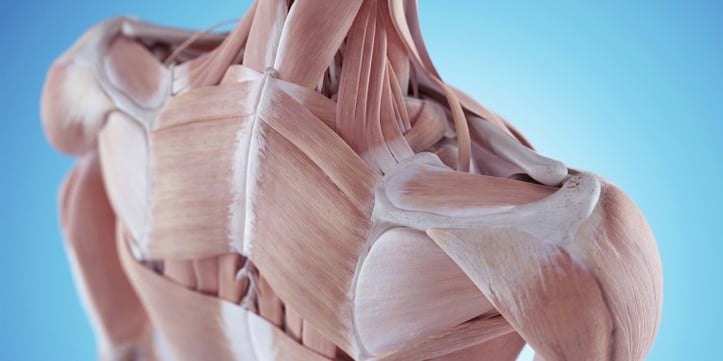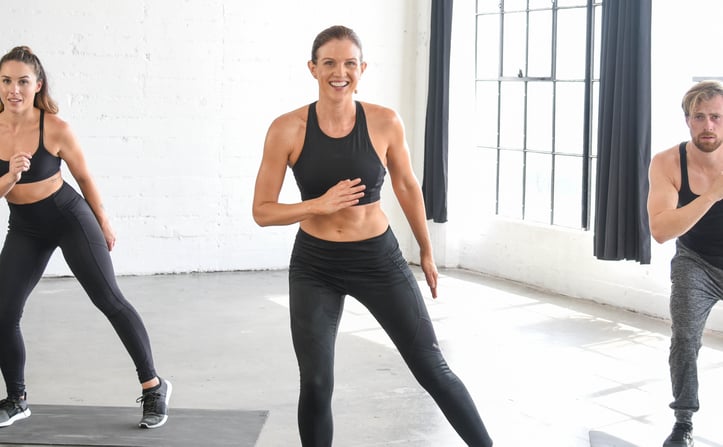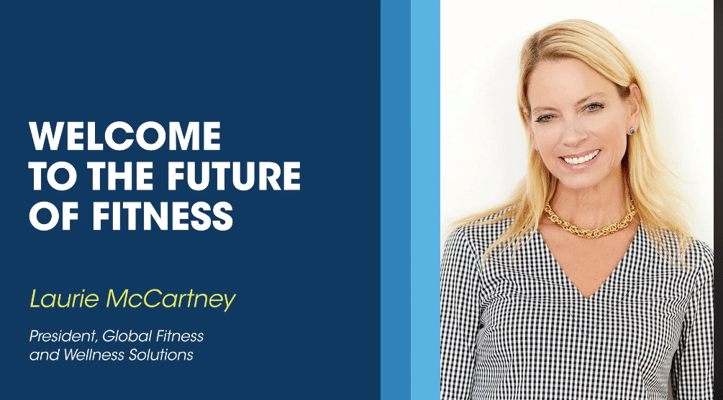Prep & Recovery: The Overlooked Pillars of an Effective and Enjoyable Exercise Program

Prep & Recovery: The Overlooked Pillars of an Effective and Enjoyable Exercise Program
Have you ever left the gym or finished a run feeling a bit "meh"—even if you technically nailed your sets or hit your target mile time? If so, you're not alone. Often, that missing spark isn't about the workout itself, but about two critical, yet frequently overlooked, pieces of the fitness puzzle: how you prepare before you train, and how you recover afterwards.
For years, fitness culture often glorified a "grind harder, push through the pain" mentality. But modern exercise science, coupled with real-world experience, reveals something far more effective and sustainable: the way you strategically prepare your body and mind before training, and the care you give yourself to recover after, can determine your progress, prevent injuries, and enhance your overall enjoyment more than the intensity of the workout itself.
Let's explore why these pillars are so crucial and how you can easily integrate them for transformative results.
Why Thoughtful Prep Matters: It's So Much More Than Just a Warm-Up
Effective "prep" isn’t just a few half-hearted arm circles or a casual stretch before you dive into heavy lifting. It’s a strategic and intentional phase designed to prime your body and your brain for the specific work ahead. Think of it as setting the stage for a peak performance.
According to the American Council on Exercise (ACE), incorporating structured pre-workout routines can boost your performance by an impressive 12-15% while significantly reducing your risk of injury by up to 30%. Here’s how to do it right:
-
Dynamic Warm-Up (5-10 minutes): Moving with Purpose Forget holding long, static stretches right before your main workout (some research, including insights from NASM, suggests this can temporarily reduce power output). Instead, embrace dynamic movements that mimic the exercises you’re about to perform.
- Examples: Gentle leg swings and hip circles for runners; bodyweight squats and lunges for lifters; arm circles with light resistance bands or small weights for upper-body days.
- Benefits: This increases your joint range of motion, elevates muscle temperature (making them more pliable), improves blood flow to working muscles, and mentally prepares you for movement.
-
Neural Activation (3-5 minutes): Waking Up Key Muscles This is about consciously "turning on" or activating the specific muscles you’ll be relying on for your workout. This helps ensure they fire correctly and efficiently.
- Example: Before a session of deadlifts or squats, perform 10-15 glute bridges. This helps to "wake up" your glutes, which are often underactive (a common weak link that can lead to other muscles, like the lower back, overcompensating). A 2021 study in the Journal of Strength and Conditioning Research found that targeted activation exercises like this can reduce compensatory movement patterns by as much as 40%.
- Other examples: Banded side steps for hip abductor activation before running or lower body work; bird-dog for core stability.
-
Mindful Intention Setting (1-2 minutes): Focusing Your Mind Take a brief moment before you start to connect with your purpose for the session. Ask yourself, "What’s my main focus for today's workout?" Is it lifting a specific weight with good form? Improving your endurance on a run? Simply moving your body and de-stressing? The University of Michigan found that exercisers who articulate clear, specific, and process-oriented goals (e.g., "I will keep my chest up and core engaged in every squat today") demonstrate up to 25% better technique retention and focus.
- Pro Tip for Beginners (and Everyone!): Start with a simple 10-15 minute prep routine incorporating both dynamic movement and a couple of activation exercises. As you become more familiar with your workouts, you can tailor it more specifically—e.g., adding banded monster walks for enhanced hip stability before sprints or plyometrics.
Recovery: Where the Real Strength and Progress Happen (It's Not Just About Being Less Sore!)
Recovery isn't just a passive waiting period until your next workout; it's an active and essential phase where the magic of adaptation and strengthening truly occurs. When you lift weights, run, or engage in any strenuous exercise, you create microscopic tears in your muscle fibers. It's during the recovery period that your body diligently repairs these micro-tears, building the muscle back stronger and more resilient than before.
Yet, a surprising 60% of exercisers admit to skipping intentional recovery practices, according to a 2023 NIH survey. It's no wonder that plateaus, persistent soreness, and burnout are so common.
Here’s how to upgrade your recovery game and unlock your body's potential:
-
Active Recovery (Immediately Post-Workout & On Rest Days): Gentle Movement is Your Friend Resist the urge to immediately collapse on the couch after a tough session (though rest is important later!). Instead, engage in 10-20 minutes of low-intensity movement.
- Examples: A gentle walk, slow cycling on a stationary bike, light yoga, or foam rolling.
- Benefits: A Harvard Health study showed that this type of active recovery can accelerate the clearance of metabolic byproducts (like lactic acid) by up to 50%, which can help reduce next-day soreness and keep your metabolism gently engaged. It also promotes blood flow, aiding in nutrient delivery to tired muscles.
-
Strategic Nutrient Timing: Fueling the Repair Process Think of your body as a "metabolic sponge" in the 30-60 minutes following a workout, particularly after intense sessions. It's primed to absorb nutrients efficiently to kickstart the repair and rebuilding process.
- The Ideal Combo: Aim for a snack or meal containing a good balance of carbohydrates and protein, often recommended in a roughly 3:1 carb-to-protein ratio (e.g., Greek yogurt with berries and a sprinkle of granola, a protein shake with a banana, or chocolate milk).
- Why it works: The International Society of Sports Nutrition confirms that this combination helps replenish depleted glycogen (energy) stores and optimizes muscle protein synthesis (the process of building new muscle).
-
Sleep: The Undisputed Champion of Recovery Tools Quality sleep is absolutely non-negotiable for effective recovery and overall well-being. During deep sleep stages, your body releases up to 75% of its daily growth hormone, which is critical for muscle repair, tissue regeneration, and overall restoration.
- The Goal: The National Sleep Foundation recommends 7-9 hours of quality sleep per night for most adults—consistently.
- Track & Adjust: Consider using a sleep tracking app or wearable (like an Oura ring, Fitbit, or Apple Watch) to gain insights into your sleep patterns. If you notice a night of poor sleep, it might be wise to scale back the intensity or duration of your workout the next day and prioritize rest.
- A Unique Insight on Recovery Needs: Your recovery needs can and should shift based on your training phase, intensity, and individual response. Beginners often thrive with daily active recovery and ensuring they don't overdo it. More advanced lifters or athletes might benefit from 1-2 complete rest days per week, strategically paired with mobility work or gentle active recovery. The golden rule: listen to your body. If you’re still significantly sore 72 hours after a workout, it’s a strong sign you under-recovered or pushed too hard too soon.
The New, Smarter Exercise Formula: Prep + Workout + Recovery = Sustainable Progress
Let’s bust an outdated myth for good: "No pain, no gain" is not the path to sustainable fitness or enjoyment. The real formula for long-term success and feeling your best is: Intentional Preparation → Focused, Effective Workout → Strategic, Nurturing Recovery
I’ve personally seen clients achieve remarkable results—some even doubling their strength in as little as 8 weeks—simply by adding a consistent 10-15 minute prep routine and prioritizing their sleep and post-workout nutrition, often without increasing the length or intensity of their actual workouts.
Your Action Step for This Week: Experiment and Observe
You don't need to overhaul everything at once. This week, choose just one prep habit and one recovery habit to consciously incorporate into your routine.
- Prep Idea: Add 2 sets of 15 glute bridges before your next lower body workout.
- Recovery Idea: Swap your usual post-workout couch time for a 15-minute gentle walk or some dedicated foam rolling.
Pay attention to how you feel. Do you feel stronger during your workout? Less sore the next day? More energized overall? These small observations are powerful feedback.
Remember, fitness isn’t a sprint to a finish line; it’s a lifelong journey of discovery and self-care. It’s the small, consistent, intelligent choices—like truly valuing your prep and recovery—that compound over time to create transformative, lasting results.
Ready to level up your program and feel the difference? Start today. Your future, stronger, and more resilient self will thank you for it.

Fit vs Fat: Decoding Health's True Ruler

Pump Up Your Heart: Science-Driven Weight Loss

Wellness Technology: Your Path to Sustainable Weight Loss

A Sensible Guide to Dietary New Year's Resolutions

Prevent Shoulder and Rotator Cuff Injuries with Corrective Exercises

Overcome Fitness Plateaus: 4 Tips for Success

10 x 10 Thanksgiving Day Circuit: A Fitness Guide

Unleash Your Fitness Potential with Kit Rich's Training Secrets

The Future of Fitness: A Guide for Beginners to Intermediates

